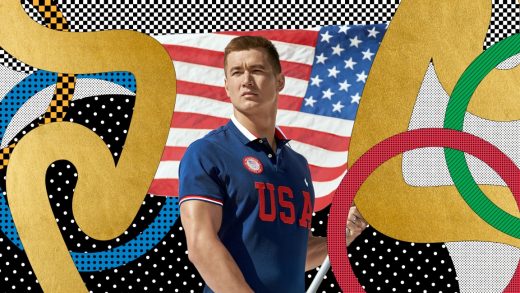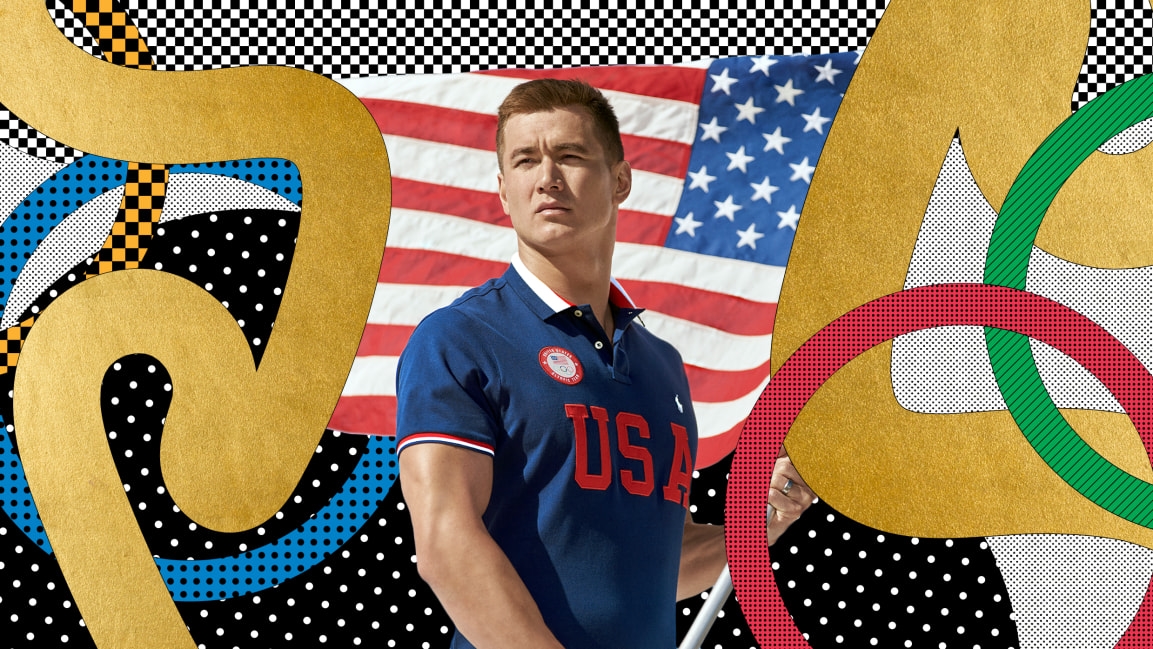Why everyone is riled up about Ralph Lauren’s Team USA uniforms—but they probably aren’t going anywhere
The Olympics aren’t just about incredible feats of sport. They’re a chance for countries to project their national identity onto the world stage.

Clothing can be key to this goal. Team USA has had an unmistakably preppy look since 2008, when the U.S. Olympic Committee gave Ralph Lauren the contract to become the official outfitter for the opening and closing ceremonies. But this year, there’s been intense backlash over an aesthetic that’s historically tied to whiteness and privilege.
Ralph Lauren is a 54-year-old brand known for shaping American fashion with prim polo shirts and sports jackets that go back to the collegiate looks of Ivy League schools in the 1970s. The outfits for the Tokyo Olympics were exactly in line with this classic aesthetic. The American contingent paraded through the stadium in skinny jeans, striped shirts, scarves emblazoned with the American flag, white sneakers, and blazers featuring an enormous Ralph Lauren logo.
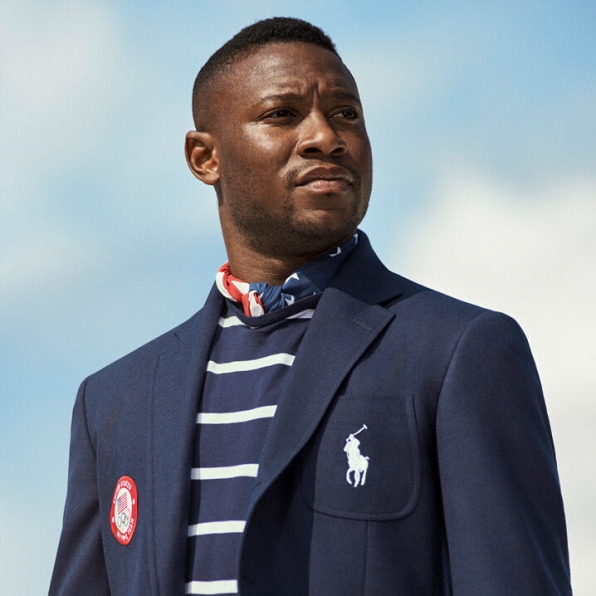
There was nothing surprising about these uniforms, but this year, people mercilessly mocked them on Twitter. “Every Summer Olympics, they let Ralph Lauren dress our team like they’re on vacation in Newport,” wrote Drew Magary, a columnist at the sports blog Defector. “What in the East Coast boarding school are these?” commented writer Rebecca Welch. “Team Karen,” an Air Force Veteran tweeted, referring to a nickname given to white women who act in an entitled way toward people of color. Some people even called for Ralph Lauren to be fired as the official outfitter of the Olympics.
Given that the Olympic uniforms have such symbolism, reflecting a country’s value’s and identity, it’s not surprising that they’d trigger such a strong reaction. New York Times reporter Astead Herndon pointed out on Twitter that the looks don’t capture the diversity and multiculturalism of the U.S. team. “Every Olympics Ralph Lauren dresses up a diverse cross section of America’s finest athletes as a Vampire Weekend cover band,” he wrote, referring to the band founded at Columbia University and known for its preppy outfits.
On some level, the response makes sense in the wake of the racial and social reckoning that has taken place over the last year. The preppy aesthetic has been historically associated with elite, often exclusionary spaces. Ralph Lauren’s mascot, the polo player, harkens to a sport that is overwhelmingly played by wealthy white people. And while Ralph Lauren and other preppy brands like Rowing Blazers have made an effort to diversify by using Black and brown models, many people still associate the look with white privilege.
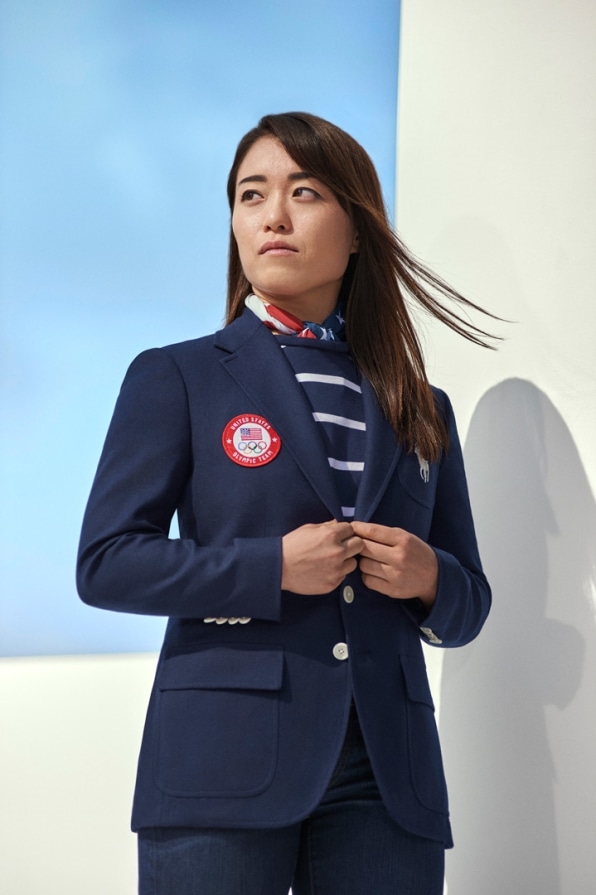
So how does a brand like Ralph Lauren get to design Team USA’s outfits in the first place? There isn’t a lot of transparency around the financials of designing the official Olympic uniforms, and Ralph Lauren declined to comment on the terms or the relationship. But a few things are clear: It’s a major investment for the company involved, but it has the potential to lead to big rewards.
The official outfitter is expected to pay to dress the entire contingent of athletes and coaches, which in the case of the United States means more than 1,100 people. In 2008, when Ralph Lauren was given the initial contract, the company estimated that it would cost under $10 million to outfit the whole team. Ralph Lauren’s 2021 revenue was $4.4 billion, so that kind of up-front cost is out of reach for all but the biggest brands.
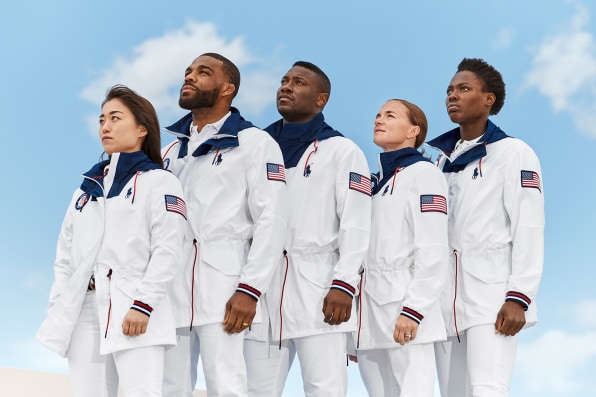
While it would be exciting to have an up-and-coming American designer like Kerby Jean-Raymond or Christopher John Rogers create the outfits, it’s unlikely they’d have the budget for it. For comparison, consider that Liberian American designer Telfar Clemens was invited to outfit Liberia’s team of just five athletes at this year’s Olympics, and he said that the sponsorship is the biggest outside investment his company has made.
On the other hand, brands that can afford to take on the gig have plenty to gain. Ralph Lauren sells pieces from the opening and closing ceremony looks; you can buy the very same blazer the athletes wore for $695 or the skinny jeans for $195. According to the original terms of the contract, Ralph Lauren reportedly pays the U.S. Olympic Committee around 10% in royalties on the sale of these products. Ralph Lauren also likes to take advantage of the Olympic spotlight to showcase its tech-forward clothing. This year, it embedded a cooling device in the blazers to help regulate the athletes’ body temperature, an important addition given the record-breaking heat waves around the world. Tokyo which is seeing daily temperatures of more than 90 degrees.
Just as importantly, the Olympics offer fashion brands an unparalleled advertising moment in front of an enormous global audience. (The previous Summer Games drew 4.5 billion viewers.) That’s why the outfits tend to have enormous logos that can be easily seen in aerial shots of the athletes. For a multinational brand like Ralph Lauren, this is an opportunity to put itself in front of consumers in Asia and Europe, where it has dozens of stores.
It’s unclear how long the brand’s contract extends for, particularly given the public outcry this year. If the U.S. Olympic Committee does switch designers, we have our money on Virgil Abloh. We can already see the cutting-edge streetwear styles he’d create for the team, along with the letters “U.S.A.” in his characteristic ironic quotation marks.
(36)

